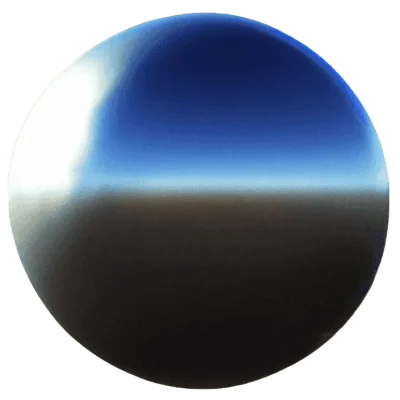Levitation

In 1890, the respected scientist Sir William Crookes published his extensive documentation of séances with the medium Daniel Dunglas Home. These records, appearing in the Journal of the Society for Psychical Research, reflect a rare intersection of disciplined scientific observation and firsthand experiences of unexplained physical phenomena.
Far from speculative musing, Crookes approached these sittings with the same rigor he applied to his scientific work. Much of this research was conducted in his private laboratory at 20 Mornington Road, London, which was widely regarded for its scientific instruments and carefully controlled experiments. Long before he turned his attention to séances, Crookes had earned the respect of his peers, including Michael Faraday, the pioneering physicist and chemist known for his work on electromagnetism, and William Thomson, later Lord Kelvin, who made foundational contributions to thermodynamics and mathematical physics. Crookes was elected a Fellow of the Royal Society in 1863 and was eventually knighted for his scientific achievements—giving considerable weight to his observations, even when they stepped outside the accepted boundaries of the time. The séances he documented from 1871 to 1872 were not theatrical diversions, but structured investigations into what he suspected might be evidence of a yet-unknown force of nature.
Crookes, already a Fellow of the Royal Society and internationally recognized, took meticulous notes as he observed the events that unfolded during these sessions with D. D. Home. Tables levitated entirely off the floor. Measured weights fluctuated dramatically using spring balances. Accordions played recognizable tunes while suspended in the air, untouched by any visible hand.
Home was seen handling red-hot coals without injury and was even witnessed floating in the air for several seconds, his feet well above the floorboards. In Crookes’ view, these were not illusions, nor the product of belief or suggestion. They were mechanical events—recordable, testable, and above all, reproducible in his own home, under conditions that he and others carefully controlled.
The sessions he recorded took place between May 1871 and the spring of 1872, primarily at his home on Mornington Road and at the residence of Miss Douglas. The level of precision and diligence in his note-taking is what makes these records stand out even today.
He was not jotting down impressions or vague recollections but measuring physical outcomes—tracking spring-balance readings, recording room temperature, tracking seating arrangements, noting exact positions of feet and hands, and often including diagrams. Each séance was more than a social event; it was a controlled experiment, and many of the same names appear again and again—his wife, his brother, respected guests like Alfred Russel Wallace—witnesses chosen not just for their presence, but for their capacity to observe.
Over the course of eleven detailed séances, a consistent pattern of phenomena emerged. Tables would lift completely off the ground or shift their weight in dramatic ways, as recorded by calibrated spring balances. An accordion, often left untouched beneath the table or held only at one end, would burst into recognizable melodies, sometimes even responding to musical requests.
Luminous forms—misty hands and glowing clouds—would appear and interact with objects or people. Messages would be tapped out or even spelled musically on the accordion itself. In one particularly stunning instance, a sprig of grass was seen to pass through the solid surface of a table without damage, emerging moments later on the opposite side and gently tapping a participant’s shoulder.
These were not casual parlor tricks or scattered anecdotes. They were repeated, observed from multiple angles, and recorded by one of the most meticulous minds of the era. On July 30, 1871, Home rose six inches from the ground and remained suspended in the air for a full ten seconds.
Crookes did not rely on verbal testimony—he watched the man’s shadow rise on the wall and took stock of all surrounding elements. He and others present made sure that no support or platform had been introduced into the room. The levitation was seen in full view and recorded as an observable fact.
Decades later, Russian entomologist Viktor Grebennikov would report similarly mysterious levitation effects, allegedly achieved through natural microstructures in insect shells. Though the context and claimed mechanisms differ, both men pursued firsthand documentation of levitation, treating it as a natural force not yet understood.
In more recent years, modern investigations into antigravity technologies have echoed these same questions. Research into phenomena like the Biefeld-Brown effect and theoretical propulsion systems suggest that science continues to explore ways in which gravity might be manipulated or counteracted—ideas that, while speculative, align with the very forces Crookes was attempting to observe and measure over a century earlier.
Similarly, the experiments of Canadian inventor John Hutchison in the 1980s—where objects were said to levitate or fuse due to intense electromagnetic fields—reflect a continued pursuit of the same fundamental mystery. His findings, collectively referred to as the Hutchison Effect, were said to include spontaneous levitation, metal bending, and the fusion of dissimilar materials, reportedly achieved through a chaotic combination of electromagnetic forces.
More recently, research into terahertz (THz) frequencies—specifically experiments involving bismuth and magnesium materials—has surfaced as another thread in this ongoing exploration. According to several experimental observations, there are reports of materials exhibiting levitation-like behavior under high-frequency electromagnetic exposure. Though still speculative, such findings reinforce the persistent effort to identify unknown forces—an effort that Crookes helped pioneer through careful, first-hand documentation.
Alongside this, the phenomenon of quantum locking—where superconductors cooled below a critical temperature levitate above magnets due to flux pinning—offers a scientifically demonstrable form of stable levitation. This phenomenon—demonstrated in modern superconductivity labs—represents yet another avenue where the seemingly impossible finds grounding in physical law, mirroring the visual awe and scientific mystery that Crookes’ séances evoked in his time.
Additionally, concepts such as psionic abilities—described as the potential for the human mind to influence physical objects—raise questions that resonate with Crookes’ records. Some discussions of mental phenomena suggest such capabilities may include telekinetic or levitational expressions of consciousness itself, further blurring the lines between intention, force, and manifestation.
Reports of levitation have also surfaced in religious contexts, particularly during exorcisms. In modern religious case reports, individuals undergoing intense spiritual episodes have been observed levitating—often interpreted as manifestations of external, non-physical forces. Although the interpretive lens differs, the phenomenon echoes the levitations documented by Crookes, reinforcing the idea that such occurrences appear across a wide range of human experiences and belief systems.
The broader category of Fortean phenomena, named after Charles Fort, includes many such instances of levitation—ranging from unexplained object movements to accounts of people reportedly floating without visible cause. Historical compilations of strange occurrences, these cases share a thematic kinship with Crookes’ séances, forming part of a larger pattern of gravitational anomalies that span cultural, scientific, and spiritual domains.
Poltergeist phenomena also fall within this extended landscape of reported levitations. Eyewitness reports in documented poltergeist cases frequently involve furniture rising, objects moving through the air, and, in rarer moments, individuals themselves being lifted. These spontaneous episodes, often occurring in domestic environments and centered around emotionally charged individuals—typically adolescents—mirror the kinds of interactive and unexpected levitations Crookes documented during his sessions with Home.
Likewise, in the realm of classified technologies and hidden research, the controversial Wilson-Davis Memo—as discussed in leaked documentation—contains alleged testimony about recovered craft exhibiting gravitational anomalies, including apparent levitation. Though framed within the context of unidentified aerial phenomena and reverse engineering, the core idea of objects defying known physical laws resonates with the consistent levitational effects Crookes observed in Home’s presence.
These theories—ranging from the Biefeld-Brown effect to propulsion concepts involving exotic material structures—illustrate the continued effort to map out forces that bend or bypass gravity as we know it—efforts that parallel the anomalies Crookes meticulously recorded decades earlier.
Crookes’ instruments also recorded changes in weight through a device that measured the force needed to lift or tilt objects. In several instances, the same table that normally required eight pounds of pressure to tilt would suddenly resist with a pull of over forty pounds. These measurements weren’t speculative—they were taken during the séances with spring balances calibrated and tested for accuracy.
At one point, a specially built apparatus involving a mahogany board, a glass bowl of water, and a copper vessel showed increased downward force when Home merely placed his hand in the suspended container—again, with no physical leverage that could explain the effect.
What strengthens the case for something extraordinary isn’t just the phenomenon itself, but the layers of observational reinforcement: different types of controls, visibility of all limbs, the inability of participants to physically interact with instruments, and repetition across multiple sessions.
Even the smallest details—like the weight of the accordion, the exact seating arrangements, and the ambient lighting—were noted. Crookes even included the emotional tone of the séance and how certain phrases or moments of reverence seemed to elicit stronger responses, reinforcing a sense of intelligent interaction.
Home’s apparent immunity to fire was another recurring marvel. On more than one occasion, he handled red-hot coals with bare hands, sometimes for several minutes at a time. On May 9, 1871, he placed one such coal directly onto a folded handkerchief belonging to Miss Douglas.
After the session, Crookes took the cloth to his lab and tested it thoroughly—there were no chemical treatments, no fire-retardant fibers. The only damage to the fabric was a small scorched hole where the coal had rested. These experiments with fire were not rushed stunts but slow, deliberate events, fully visible to everyone in the room.
At several points throughout the sessions, musical notes spelled out sentences or offered messages of encouragement or blessing. One striking message, communicated by raps and echoed in music, declared, “It is a glorious truth. It was the solace of my earth life and the triumph over the change called death,” and was attributed to the spirit of Robert Chambers.
While the source of such messages could never be definitively identified, their content—elevated, reverent, often poetic—reflected something more profound than novelty.
Even more compelling are the instances where the séance phenomena not only occurred but responded interactively. If a participant asked a question, there might be a musical response or a precise number of raps. If a flower was requested or offered, it would be transported—sometimes across the room—by what witnesses described as a translucent hand.
On multiple occasions, guests described being touched gently on the arm or hand, sometimes with fingers they could see, other times only a sense of presence, always under conditions arranged for maximum visibility and verification.
There is also an unmistakable emotional texture to Crookes’ descriptions, especially in later sittings. When a bouquet brought from home moved on its own and a message said “In Memoriam,” participants wept.
These were not merely studies in motion or force; they became moments of communion. The document’s value lies not only in its scientific rigor but also in its earnest attempt to capture the full spectrum of what was happening: the mechanical, the sensory, and the personal.
Taken together, Crookes’ notes offer not just a glimpse into séances with D. D. Home but a record of one man’s attempt to confront the unknown without prejudice. He measured what could be measured, described what could be described, and preserved what could not yet be explained. The result is not simply a log of strange events, but a blueprint for inquiry itself—an invitation to remain open, curious, and diligent in the presence of things we do not yet understand.


